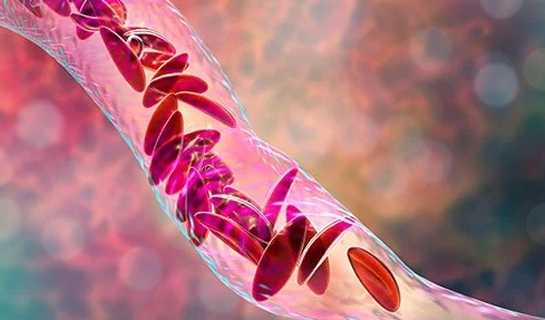WORKING HOURS
7 Days a Week from 24 Hours
LOCATION AND ADDRESS
HOTLINE & GENERAL INFORMATION
AHM +91-7043008890 | BLR +91-6366209990 | CHR +91 9501768105
Sickle Cell Anemia:




What Is Sickle Cell Anemia?
How Prevalent Is Sickle Cell Anaemia?
- 68% at the age of 0 to 3 years
- 39% at the age of 4 to 9 years
- 24% at the age of 10 to 14 years

Factors Responsible For Scad
- Severe pain
- Anaemia
- Pain in the chest with breathing difficulty
- Joint pains that can be considered as arthritis
- Strokes, seizures, etc
- Blockage of the blood flow in vital organs such as limbs, liver, spleen, etc.
- Severe infection
- Severe pain in the back, arms, abdomen, etc.
- Can cause permanent brain damage
Prognosis Of The Sickle Cell Anaemia Disease

What Goes Wrong In The Scad?
- Severe pain
- Anaemia
- Pain in the chest with breathing difficulty
- Joint pains that can be considered as arthritis
- Strokes, seizures, etc
- Blockage of the blood flow in vital organs such as limbs, liver, spleen, etc.
- Severe infection
- Severe pain in the back, arms, abdomen, etc.
- Can cause permanent brain damage


How Stem Cells Treatment Can Help!
Stem cells are the mother cells that are responsible for developing an entire human body from a tiny two celled embryo; due to their unlimited divisions and strong power to differentiate into all the cells of different lineage. This power of stem cells has been harnessed by the technology to isolate them outside the human body, concentrate in the clean environment and infused back.
Thus, stem cells treatment involves administration of concentrated cells in the targeted area to form colonies; a peculiar characteristic of stem cells, adapt the properties of resident stem cells and initiate some of the lost functions that have been compromised by the disease or injury.
Various studies have suggested that stem cells obtained from matched allogenic donor can be very effective for the condition, reversing it to be normal. The child has to undergo complete destruction of his/her own bone marrow and undergo infusion of bone marrow stem cells from allogenically matched donor.
The haematopoietic stem cells and some percentage of mesenchymal stem cells are found to be very effective in complete replacement of total bone marrow with the healthy cells, due to their regeneration power. It has as well been suggested that the population of mesenchymal stem cells will home in different damaged areas to give rise to different organ specific cells, which have been damaged to restore back their function. However, the earlier the treatment starts; the more effective the treatment can be.
Treatment Of Sickle Cell Anaemia At GIOSTAR

LOCAL ADMINISTRATION

INTRAVENOUS ADMINISTRATION
What Sets Us Apart
- Headquartered in the USA.
- The founder is the leading authority in the field of stem cell science credited with helping in setting up the stem cell research programs at top research institutions in the USA including Salk Research Institute, Sanford-Burnham Institute, UCI, UCSD.
- Scientific And Medical Advisers/Consultants are luminaries who have worked at leading Universities in the USA and Europe.
- State of the art and the first private Stem cell treatment hospital in India inaugurated by (then Chief Minister of State of Gujarat) and present Prime Minister of India Shri Narendra Modi
- One of the world’s largest Stem Cell Hospitals funded by the government of Gujarat, India.

Disclaimer : Results may vary for each patient. GIOSTAR practice the application of stem cell therapy within the legal regulations of each country.

